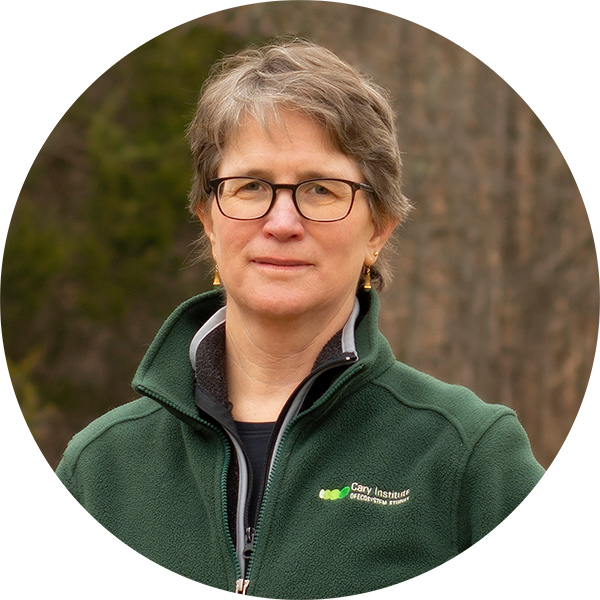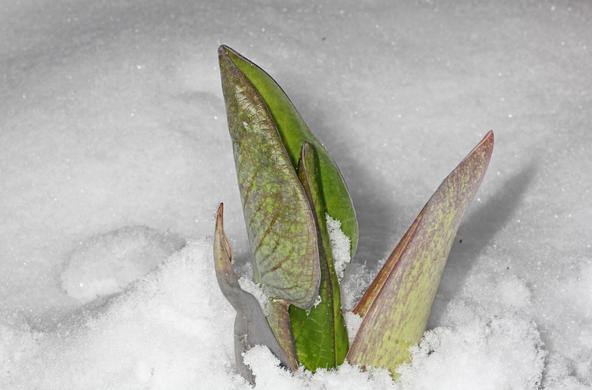The temperature is dropping, days are shortening, and plants are buttoning up and hunkering down for winter. Where I grew up in California, we had two seasons: summer and winter. The temperature went from 60F to 65F and back again. Winter was the growing season and in summer everything dried up and went to seed.
When my California family visits me in upstate New York during the summer, they are astonished at all the green, and how big and lush the vegetation is. Leaves are the size of dinner plates. The tops of trees meet each other across roads. A road not maintained will disappear under one summer’s growth. But in winter, everything looks dead. Of course, the plants are only dormant and the animals hibernating. Next spring, they’ll be back.
We are so fortunate in the northeastern US to have seasons. Every year without fail, our tilted planet completes one orbit around our sun. In summer, we’re tilted toward the sun and in winter we’re tilted away. As a result, summer days are long and warm, while winter days are short and cold. Spring and autumn are transition times, when plants emerge from or begin dormancy. Our plants and animals have evolved to survive and thrive in these conditions. They go dormant in winter and grow madly in summer. Every year.
Two conditions trigger plants to enter or emerge from dormancy: daylight and temperature
In the spring, when the length of time between dawn and dusk reaches a certain number of minutes, and the cumulative temperature reaches a certain point, our spring peepers crawl out of the mud, skunk cabbages send up flower shoots, and tree buds start to swell. In the autumn, the opposite happens. When day length shrinks and the temperature drops, leaves lose their green pigments, turn spectacular colors, and fall off. Eventually, all activity grinds to a slow idle as winter sets in.
The timing of those spring and autumn transitions is incredibly important. Our native plants and animals have evolved to thrive in a growing season that is predictable. Unfortunately, we have altered that predictability with our greenhouse gases. Flowers that open too early may not synchronize with the insects that pollinate them. Leaves that hang onto a tree too long may weigh down a branch under an early heavy snow, imperiling the tree that they are attached to. We don’t yet know the full extent of these effects.

Climate change has thrown seasonal predictability into turmoil
Overall, growing seasons have gotten longer. Occasionally, spring comes very early, but for the most part, longer growing seasons are because the first frost is happening later in the fall. We don’t know how this will impact our plants and animals. Some may adapt, but others may die out. To study these changes at Cary Institute, we engage local volunteers to help collect data.
The study of the timing of seasonal changes – like budburst and bird migration – is called phenology. Observing when flowers open in the spring, or when leaves change color in the fall, is all part of the study of phenology. To understand how climate change affects phenology, we must note the dates when these changes occur every year, for many years.
To get a precise read on this timing, we need help
It’s impossible for one observer to witness the exact time leaves open up. But with many observers, we’re likely to catch that day. Repeat this yearly, and we have a robust dataset to allow us to see the effects of climate change on our plants and animals.
If you’d like to help collect these data, please call or send us a message. A weekly visit to our phenology trail, located in the Fern Glen on Cary Institute’s property in Millbrook, NY, is all it takes. You can record observations on a smartphone or tablet, or if you prefer, you can use physical datasheets. Answer yes or no questions about our marked plants and upload your answers to the National Phenology Network website.
Your contribution to this important science can help us document the many ways Earth is responding to climate change, and guide natural resource management to accommodate these shifts.
Interested in becoming a Fern Glen Phenology Trail observer?
Learn more by contacting Vicky Kelly:
Phone: (845) 677-7600 ext 174
Email: kellyv@caryinstitute.org
Find us on SciStarter







